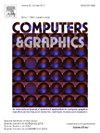外观作为可靠的证据:调和外观和生成先验的单目运动估计
IF 2.8
4区 计算机科学
Q2 COMPUTER SCIENCE, SOFTWARE ENGINEERING
引用次数: 0
摘要
在真实场景中,由于存在噪声和可能的遮挡检测,单目运动估计具有挑战性。最近的方法提出了一种基于扩散的生成运动先验,它将输入检测作为有噪声的部分证据,并通过去噪来生成运动。这提高了鲁棒性和运动质量,但不管去噪的运动是否接近视觉观察,这通常会导致不对准。在这项工作中,我们建议调和模型外观和运动先验,这使得外观发挥关键作用,为准确的视觉对齐提供可靠的无噪声视觉证据。外观采用场景和人的亮度建模,实现联合可微渲染。为了在没有遮罩和深度的单目RGB输入中实现这一目标,我们提出了一种语义摄动模式估计方法,从具有复杂遮挡关系的动态输入中忠实地估计静态场景的亮度,并提出了一种折线深度校准方法,利用深度估计模型的知识来恢复缺失的深度信息。同时,为了在优化过程中充分利用运动先验知识并将其与外观指导相协调,我们还提出了一种闭塞感知梯度合并策略。实验结果表明,该方法在保持竞争性运动质量的同时,获得了更好的对齐跟踪结果。我们的代码发布在https://github.com/Zipei-Chen/Appearance-as-Reliable-Evidence-implementation。本文章由计算机程序翻译,如有差异,请以英文原文为准。
Appearance as reliable evidence: Reconciling appearance and generative priors for monocular motion estimation
Monocular motion estimation in real scenes is challenging with the presence of noisy and possibly occluded detections. The recent method proposes to introduce a diffusion-based generative motion prior, which treats input detections as noisy partial evidence and generates motion through denoising. This advances robustness and motion quality, yet regardless of whether the denoised motion is close to visual observation, which often causes misalignment. In this work, we propose to reconcile model appearance and motion prior, which enables appearance to play the crucial role of providing reliable noise-free visual evidence for accurate visual alignment. The appearance is modeled by the radiance of both scene and human for joint differentiable rendering. To achieve this with monocular RGB input without mask and depth, we propose a semantic-perturbed mode estimation method to faithfully estimate static scene radiance from dynamic input with complex occlusion relationships, and a polyline depth calibration method to leverage knowledge from depth estimation model to recover the missing depth information. Meanwhile, to leverage knowledge from motion prior and reconcile it with the appearance guidance during optimization, we also propose an occlusion-aware gradient merging strategy. Experimental results demonstrate that our method achieves better-aligned tracking results while maintaining competitive motion quality. Our code is released at https://github.com/Zipei-Chen/Appearance-as-Reliable-Evidence-implementation.
求助全文
通过发布文献求助,成功后即可免费获取论文全文。
去求助
来源期刊

Computers & Graphics-Uk
工程技术-计算机:软件工程
CiteScore
5.30
自引率
12.00%
发文量
173
审稿时长
38 days
期刊介绍:
Computers & Graphics is dedicated to disseminate information on research and applications of computer graphics (CG) techniques. The journal encourages articles on:
1. Research and applications of interactive computer graphics. We are particularly interested in novel interaction techniques and applications of CG to problem domains.
2. State-of-the-art papers on late-breaking, cutting-edge research on CG.
3. Information on innovative uses of graphics principles and technologies.
4. Tutorial papers on both teaching CG principles and innovative uses of CG in education.
 求助内容:
求助内容: 应助结果提醒方式:
应助结果提醒方式:


